From: Newquay to Porthcothan
Distance: 11.5m / 18.4km
Cumulated distance: 74.7m / 120km
Percentage Completed: 7.27
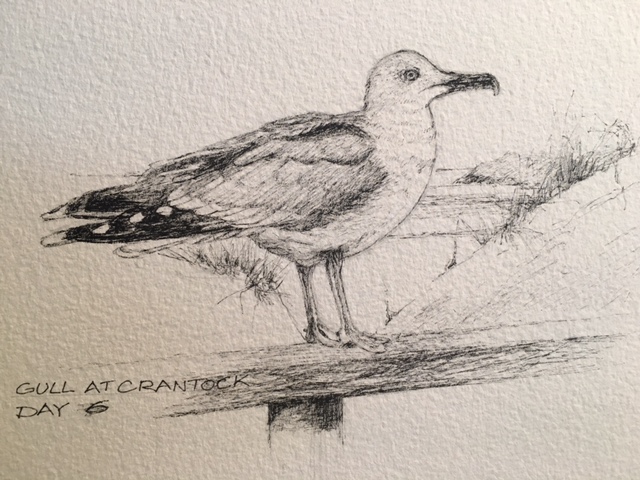
The other day I learnt about contours. Today’s lesson was in tides. There are high ones and low ones. And bridges which take you across estuaries in low tides don’t do the same when it’s high tide ..
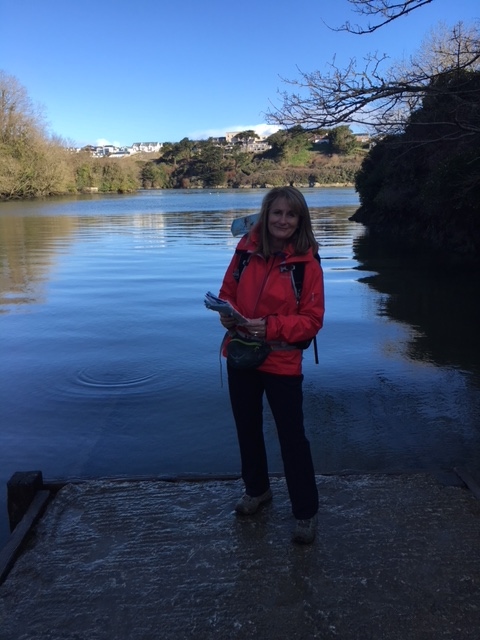
Low tide bridge at high tide in Crantock
This rather fundamental confusion meant a detour of 3 miles, around The Gannel Estuary until we found the high tide bridge.
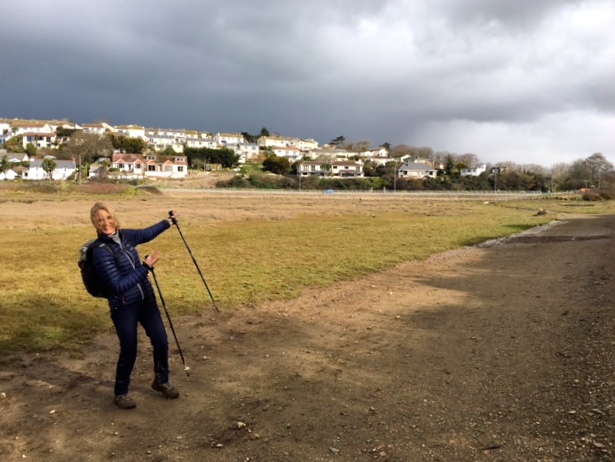
Eventually .. the bridge!
There was a lot of mud and water to challenge us along the way but we also found a swing in the woods which was a lot of fun.
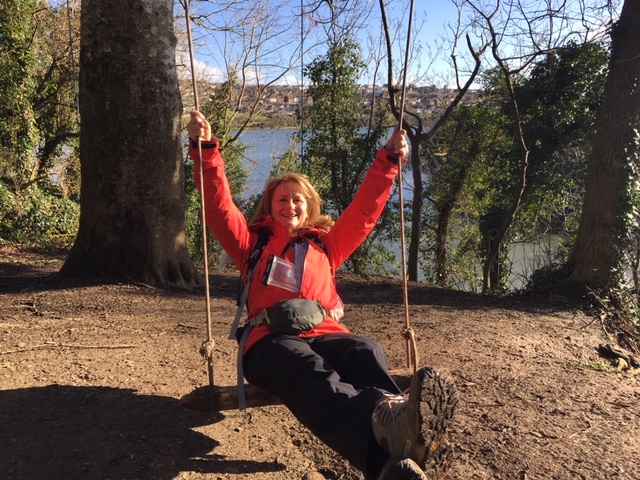
Swing diversion
My friend Liz joined me today for the walk to Porthcothan. It was great to have company and someone to help me forge a path through the mud and streams, when the way-marking was difficult to find.
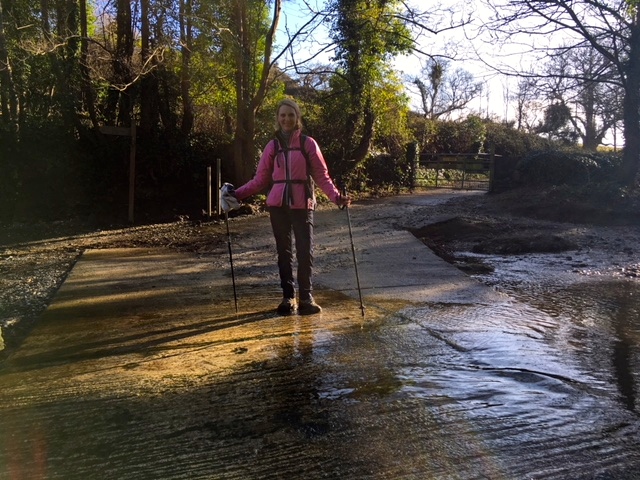
Crossing the ford
We made our way through the outskirts of Newquay, grabbed a coffee and rejoined the Coastal Path just after the little beach of Lusty Glaze. Yes, you read that correctly and here’s a photo to prove I’m not making it up ..
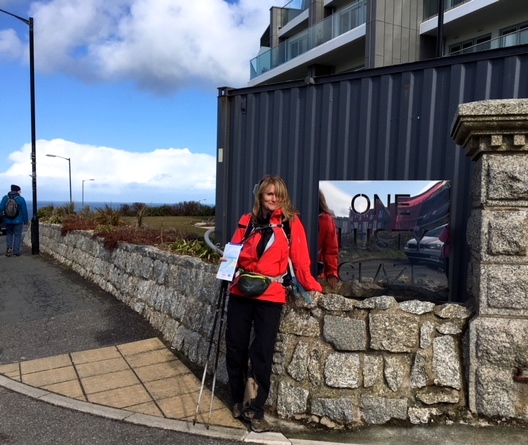
Beach apartments at Lusty Glaze
After walking past Whipsiderry Beach and Fruitful Cove we came to Watergate Bay. I have very fond memories of Watergate Bay and its long sandy beach. It’s a surfers’ beach these days but as I was growing up, we loved just racing to the shore and jumping over the massive, crashing waves. They were wonderful too for filling up the moats of our patiently built sandcastles. It reminds me of later in my life when our boy was taught by his godfather and his sister to build Frenchmen traps on beaches. Not as innocent as my sandcastles, these consisted of concealed trenches created beneath the surface of the beach .. built solely with the intent of causing unsuspecting passersby to sink suddenly into the unseen hole! Looking down on the beach from the south end, it was every bit as beautiful as I remembered.
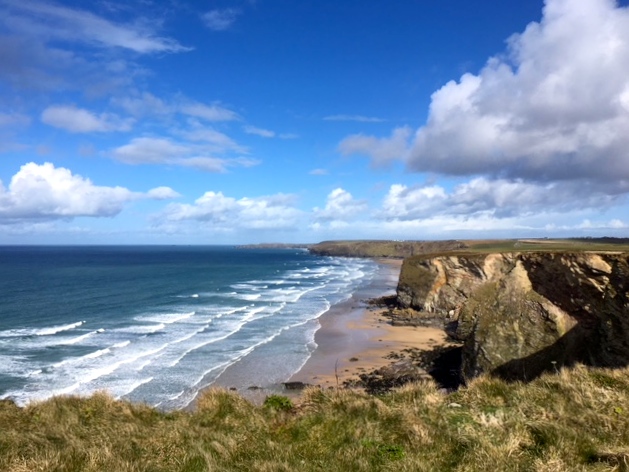
Watergate Bay
We had a tentative plan to stop at the cafe on the beach to grab a sandwich around midday. One thing turned into another and we ended up having lunch instead at Jamie Oliver’s original Fifteen restaurant .. and instead of my normal glass of water, a couple of glasses of wine too! (The same thing happened last time I walked with Liz, along the Thames .. so I’m totally blaming her for this lingering diversion!) Of course it was utterly delicious and the views from the window were dramatic, with white fluffy clouds in an azure sky being chased by steely grey storm clouds and brave hardy kite surfers. And many, many happy dogs chasing sticks and balls.

Unexpected (long) lunch at Jamie’s
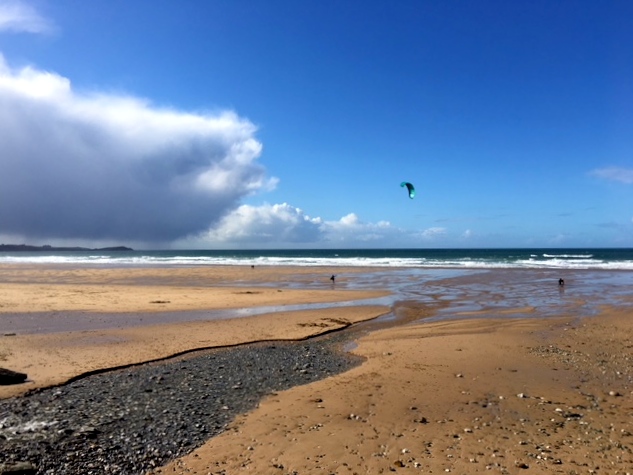
Kite surfer at Watergate
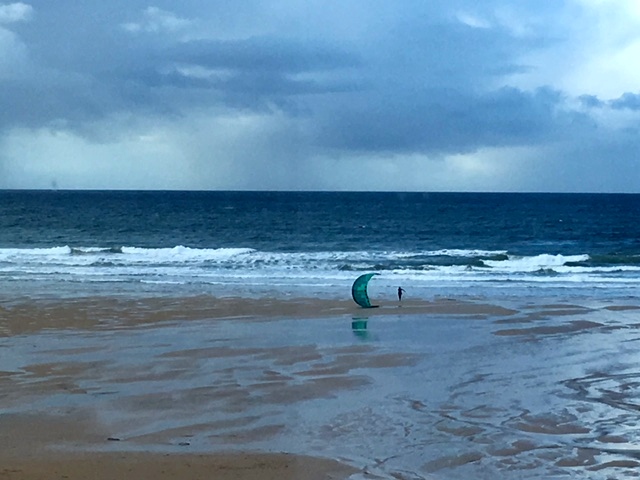
Packing up the kite
On the adjacent table to us were a mum and dad with their two toddlers. They were impeccably behaved, the children that is, and we struck up a conversation with them later, as we were putting on our coats. We started a silly game about ears and eyes and fingers and toes. The conversation went like this ..
Me: How many eyes do you have?
Adorable little boy: Two!
Me: And what do you use them for?
Adorable little boy: To see with!
Me: How many noses do you have?
Adorable little boy: One!
Me: And what do you use it for?
Adorable little boy: For picking!
Out of the mouth of babes.
With our wet weather gear back on we went out into the rain. It was one of those sorts of days .. rain then sun; sun then rain. We consulted the map. Almost as common as the word ‘shaft’ scattered along the map of the coast, is the word ‘tumulus’, written in oldy worldy script with seraphs. There were a good number of them today along the Path. Turns out it’s the word for ‘ancient burial mound’. Clearly people liked to be buried in places where they would have a good view in the afterlife, as many tumuli are located on headlands and cliffs, overlooking the ocean. I find it a bizarre notion that IF there is an afterlife, that you would stay lying in your tomb, even if the view is good. Wouldn’t you want to get up and go do things? Makes no sense to me.
With the alternating rain and sun during the day we saw no less than five rainbows. Just beautiful. And with the combination of rain and sun breaking through the clouds there were some fabulous views.
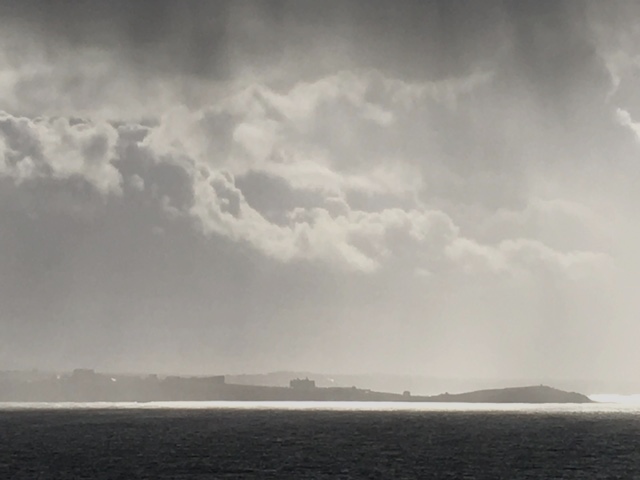
Weird and wonderful weather
There were none of the steep, uneven steps of previous days along the path and it was a joy to be able to crank up the pace and cover the miles quickly.

The Path not far from Saint Eval
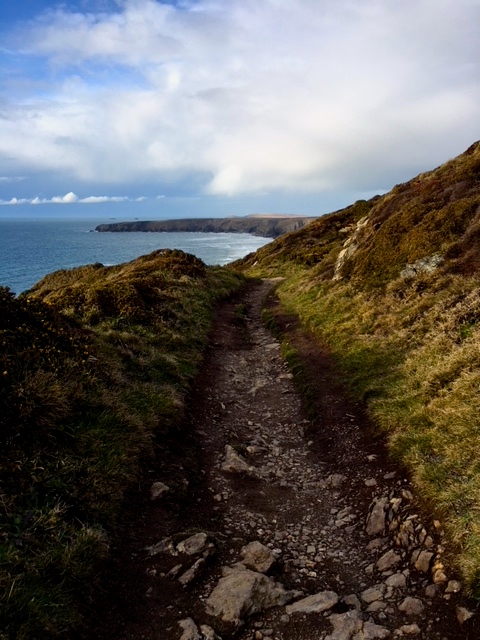
South West Coast Path close to Mawgan Porth
The views remained spectacular. The colossal, pointed stacks marching across the beach at Bedruthan Steps were, according to legend, stepping stones for the Giant Bedruthan. With all the caves among the granite on the shore it was easy to imagine smugglers hiding away their booty. It’s a magical landscape.
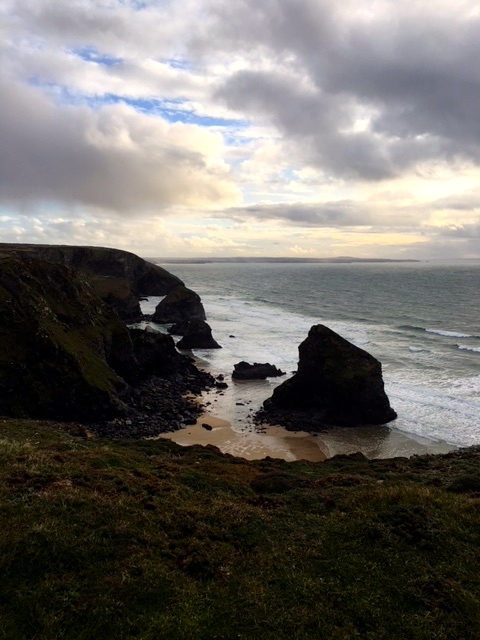
Bedruthan Steps
Last beach of the day is Porthcothan. It’s another dog-friendly beach and was used in Poldark as Nampara Land. Anyone who knows me will be aware of how much I adore dogs, especially black labradors, in fact any labradors and actually most dogs. But particularly black labradors. Especially those called Chuckles. And so there’s a bit of a conundrum for me (and others), as to why Churchill famously chose the term ‘black dog’ to refer to his depression. He wasn’t the first to use it either. Samuel Johnson, the English author wrote in 1783: ‘When I rise my breakfast is solitary, the black dog waits to share it, from breakfast to dinner he continues barking’. Johnson also used the term when writing to the diarist Boswell, ‘What will you do to keep away the black dog that worries you at home?’
Being so comforted by Chuckles when I had my own dark days, I felt compelled to find out more. Was it just the presence of a loyal black dog, always at your side, always ‘dogging’ you that led Johnson and Churchill to malign all black dogs and for the term to become synonymous with depression?
Well, it turns out you could write a thesis about it. I’ll spare you the unbelievable detail and just give you the bare bones. Folklore in Britain is riddled with stories about black dogs, almost always appearing as nocturnal apparitions and strongly associated with the devil. Seeing the black dog was a serious warning that death was about to strike, especially if he appeared to you at crossroads, places of execution or ancient pathways (yikes!!). Around the UK names for the black dog are fabulously expressive: Hairy Jack, Shriker, Churchyard Beast, Shug Monkey, Galleytrot, Swooning Shadow, Bogey Beast and (take note HP fans), Padfoot and Grim. Every single county in England, bar Middlesex and Rutland, have reports of black dogs in their history. The most famous has to be Arthur Conan Doyle’s ‘Hound of the Baskervilles’. And the vast majority are malevolent harbingers of impending doom. No wonder they were thought appropriate as metaphors for clinging melancholia.
I’m thrilled to find out though, that there are a few benevolent black dogs. As I walk across Somerset and the Quantock Hills for instance, I can apparently look forward to meeting the ‘Gurt Dog’, who will protect and guide me as a lone traveller. I guess it means that I will have to continue to view the black dog with a strong dose of irony … benign and malevolent in equal measures.
Black Dog Tails
Chuckles. My very own hero, who barely left my side when I was hounded by the metaphorical black dog.
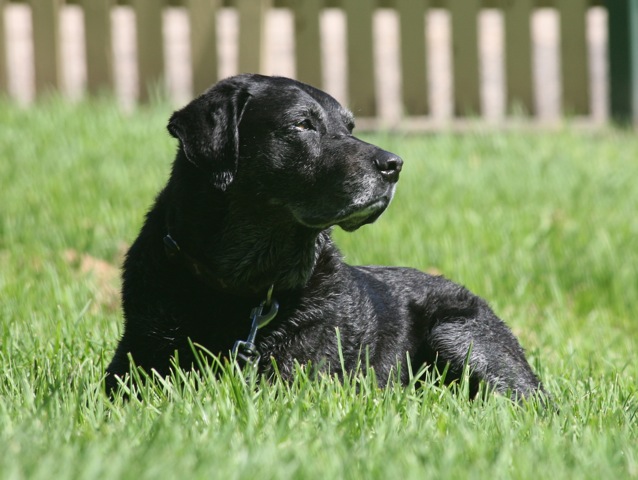
![]()



Good to see you back on the trail after your rest day. And how nice to have a companion.
I can see rest days are going to be very important! And companions too. When do you start your next leg?
Really enjoyed hearing about your day, delighted you had a lovely lunch with great company and fascinating reading on Black Dogs. Dear Chuckles, what a strong comfort and companion he was – we are lucky to have them!
Would love to have you here Kate .. you’d love the coastal walk. xx
Surely one of the greatest pluses of long-distance walking is one’s heightened contact with and unhurried appreciation of nature and landscape…as your words and pics so well attest
Could not have put it better myself. Loving every second of it .. and feeling very lucky I have this opportunity. x
You sound so happy Jules. Pleased you had a good day and I love that sort of weather, particularly by the coast where you can see the clouds gathering and the rain coming. Keep enjoying each day and I am enjoying reading about it. X
I’m so loving the journey, Marilyn .. can’t think why it’s taken me so long to do it. Always great getting your messages and you’re never far from my thoughts as I imagine you treading the same steps. xx
Thank you for your blog, Jules. What do you enjoy more: the writing or the walking part of your tour? For the time being, we definitely enjoy the former and try to picture where you are, how cold and wet it might be etc. I adore these weird and complicated English names of places, would take me another lifetime to pronounce them.
Great that Liz has joined you, love from late summer downunder to both of you
You are so welcome, Birgit! In truth I love them both .. just wish I had you with me to take the photos! xx
Oh I love telling people the story of the Frenchmen traps! We had so much fun and I can’t believe we were allowed to get away with it!
Beautiful story telling as always Jules and I love the pic of the clouds
Thank you, Steen .. you were the queen of French traps! x
I have a new guilty secret, 15 mins if the Archers and then a read of your blog! In awe,slightly jealous and so excited for upcoming. adventures. One question.. you are alwYslooking so glam, have you factored in a hair appt somewhere Nc. Big pedicure! Keep Calm and Keep Walking ps chuckle ❤️❤️
That’s what rest days are for, Shauna!! Love being your second guilty secret. I have 6 omnibuses to catch up on myself when I’m walking through Devon! Looking forward to Hadrian’s Wall. xx
I am a real, live, beautiful non metaphorical black dog coming to join you tomorrow with my large, inferior, slightly annoying yellow mate called Pollo! We have seen our food, leads, poo bags all ready to go so know there is an exciting trip in store and hopefully lots of long walks. I particularly like beaches. Our lovely owners seem rather excited too and have noted the long lunch yesterday muttering something about not being fobbed off with a “dry”, sandy, soggy sandwich on the hoof!
Lots and lots of love Mena xxx
PS Nick and Joanna send their love too!
Oh Mena, I’m very excited that you’re coming along for the Black Dog Walk tomorrow! I think I can promise you a lovely beach at the end of the day’s walk .. as long as that human of yours, Nick doesn’t get us lost! Do bring the yellow one along too .. wouldn’t want him to feel left out! And please tell Nick and Joanna that even if lunch is brief, dinner most certainly won’t be! xxxx
The French traps made me laugh. Wonderful memories.
Really enjoying your blog Jules – your writing, photos, sketches, thoughts and bits of history and stories. Fantastic Jules.
We are also looking forward to joining you in Scotland.
Keep well and look after yourself xx
Thank you Ils. I’m really loving it. Will be lovely to have you with me north of the border. xx
Dear Jules – what utterly amazing scenery – but I dare say it will continue, morphing into other beautiful vistas. So glad you’ve settled into the walk – love and admiration for your determination and emotional honesty. X
I know just how much you would love it here, Frannie .. although today was a little on the wet side! This is definitely one of the best things I’ve ever done. xx
Cannot tell you how much I am enjoying your wonderful account of walking the coastal path. We lived on Watergate Bay for two years when the hotel was owned by the RAF. We were nine familie with 27 children between us! One family had nine!
We also spent painting holidays at Hartland and on the Cadbury estate where I remember the Oak trees you mention. We had friends who lived at Porthcoffan.
As we have never met I know this is not really of any interest but I just wanted you to know what pleasure I get from logging on every day. Thank you Elizabeth is my contact asI know her Mother well
Yours appreciatively. Bridget
Hello Bridget, I loved receiving your comment and hearing all the ways in which the blog has resonated with you! Thank you for your very kind words .. it really helps to receive them, when I know 17 miles in the snow awaits outside. As it does today!